Abstract
The characteristics of the spectroscopic responses to membrane potential are examined for a series of dyes based on the 4-(p-aminostyryl)-1-pyridinium chromophore. An apparatus using an oxidized cholesterol hemispherical bilayer and phase-sensitive detection provides response spectra in either transmission or fluorescence excitation modes. All the probes with good binding properties display biphasic response spectra that are similar in both shape and magnitude. Detailed analysis of the response spectra allows all the previously discovered mechanisms for extrinsic potential sensitive molecular probes, which require a change in the probe's chemical environment, to be ruled out. The data are consistent with an electrochromic mechanism. Polarized fluorescence intensities from the membrane-bound probes indicate that the chromophore is optimally oriented for an electrochromic response.
Full text
PDF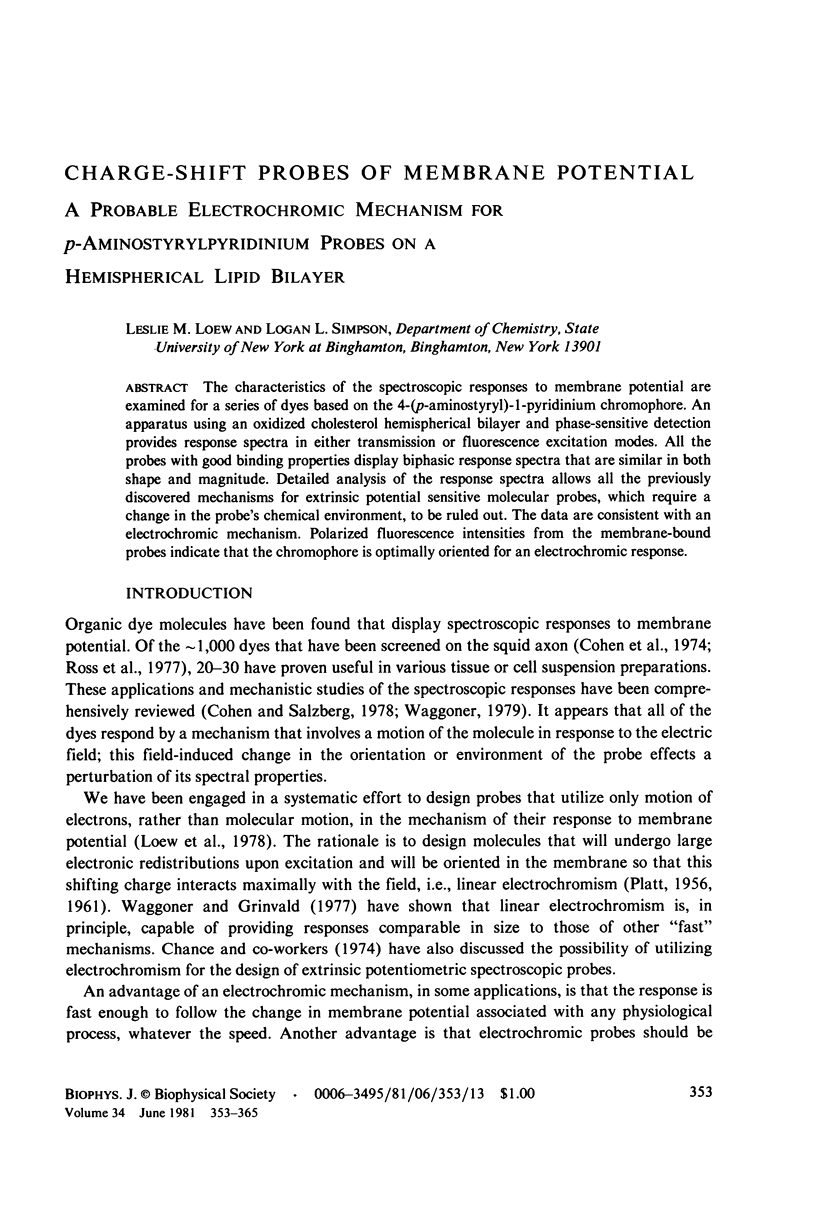
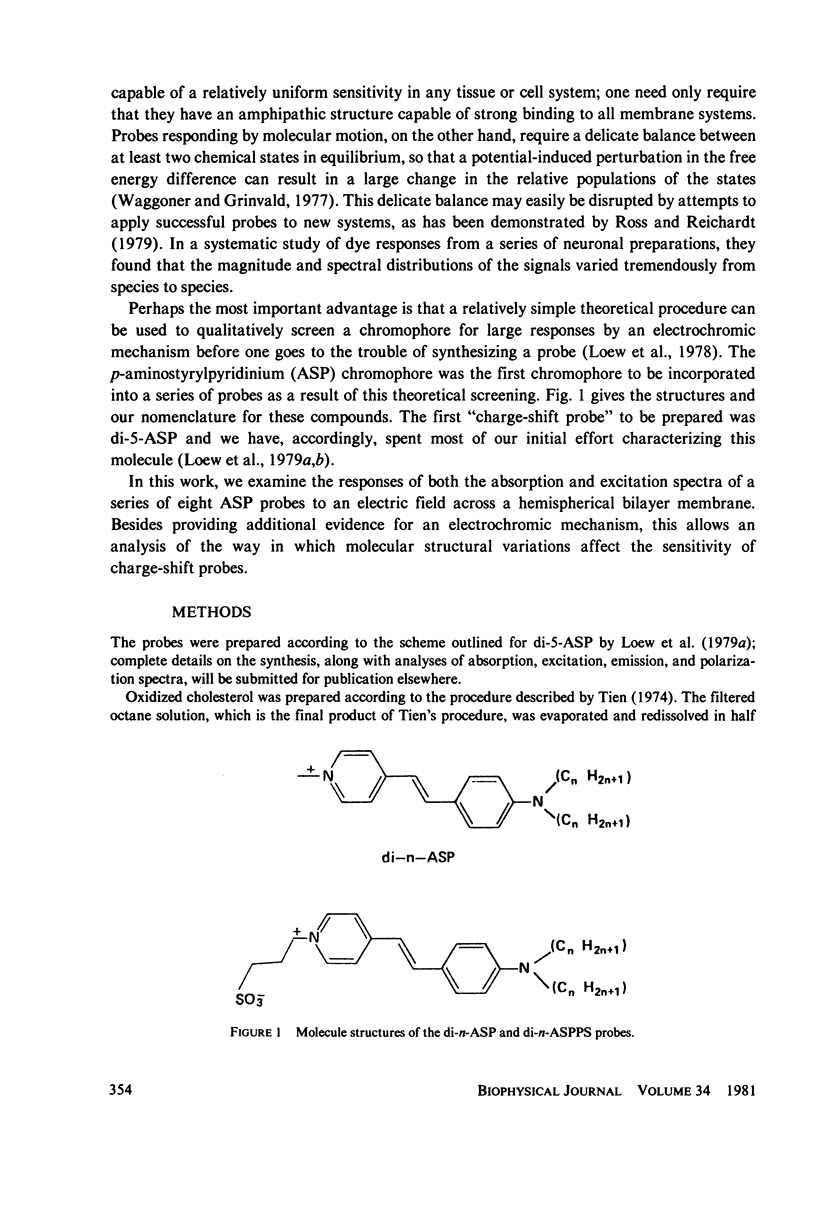
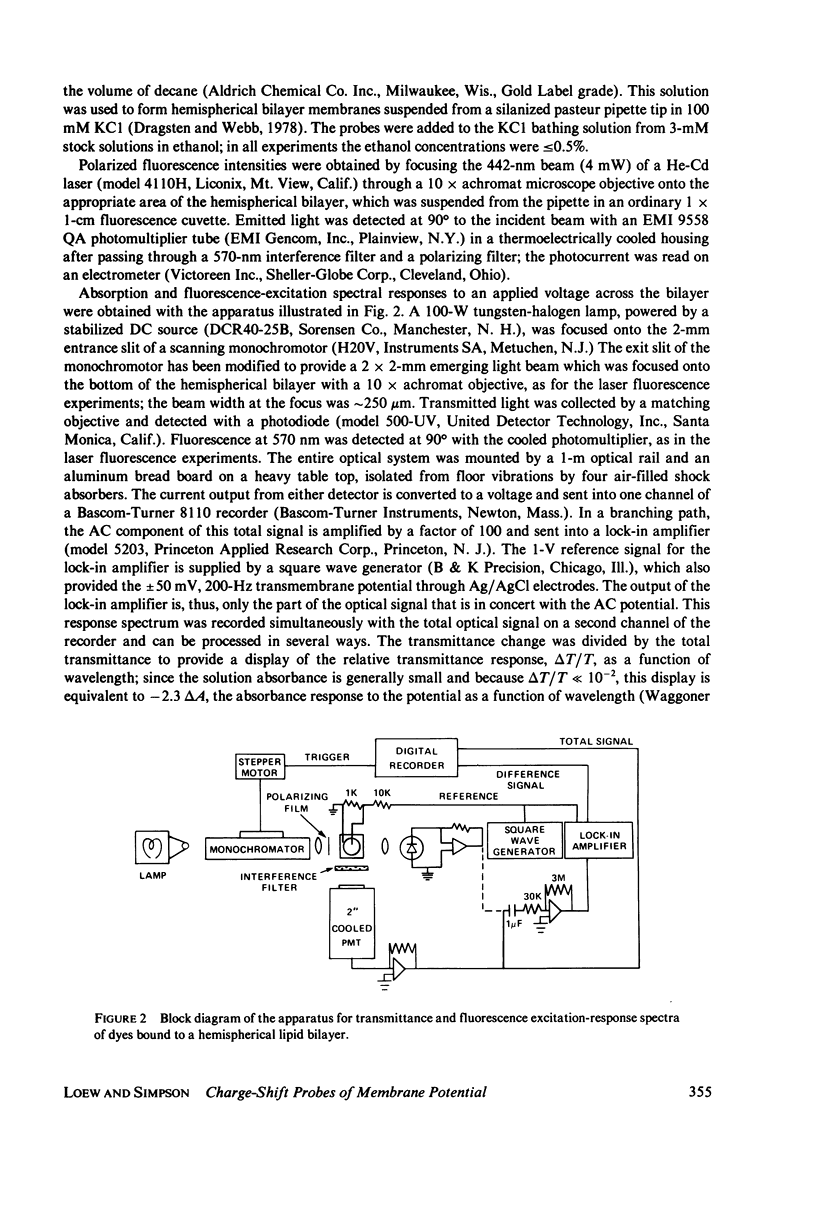
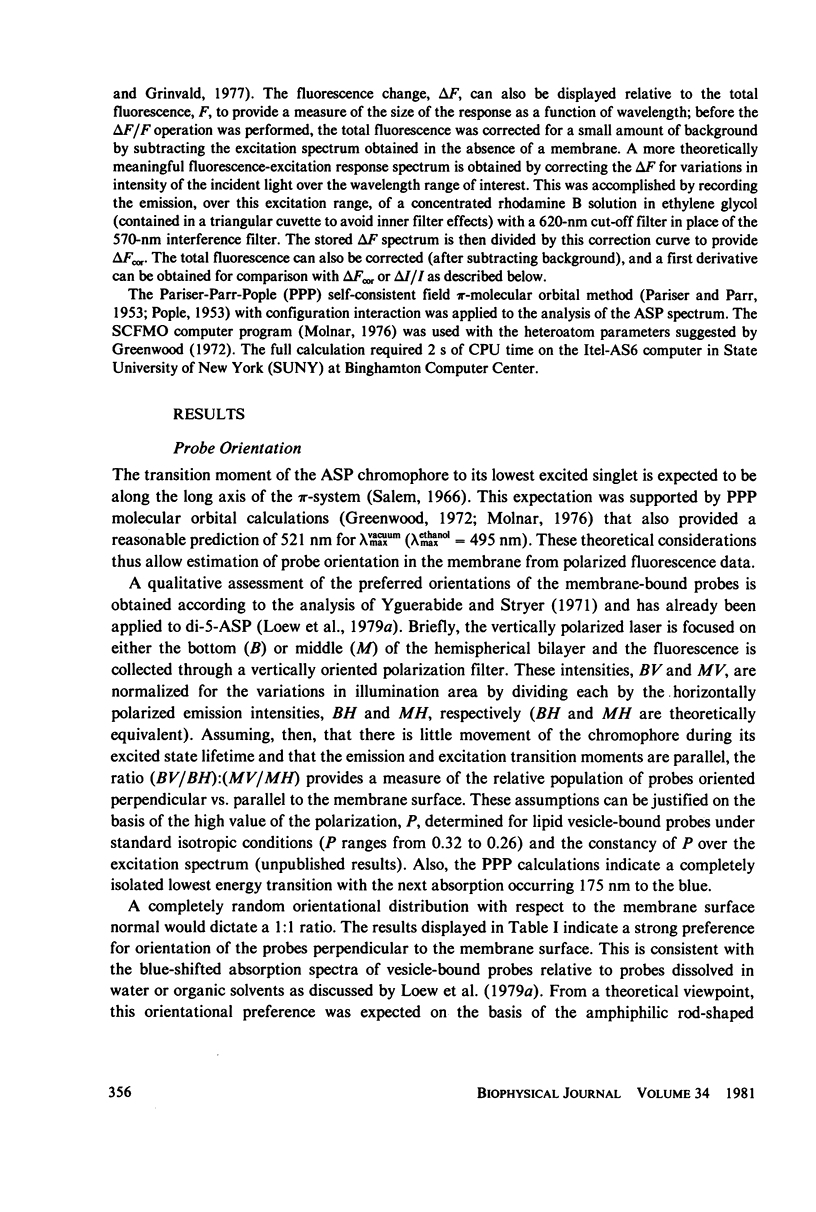

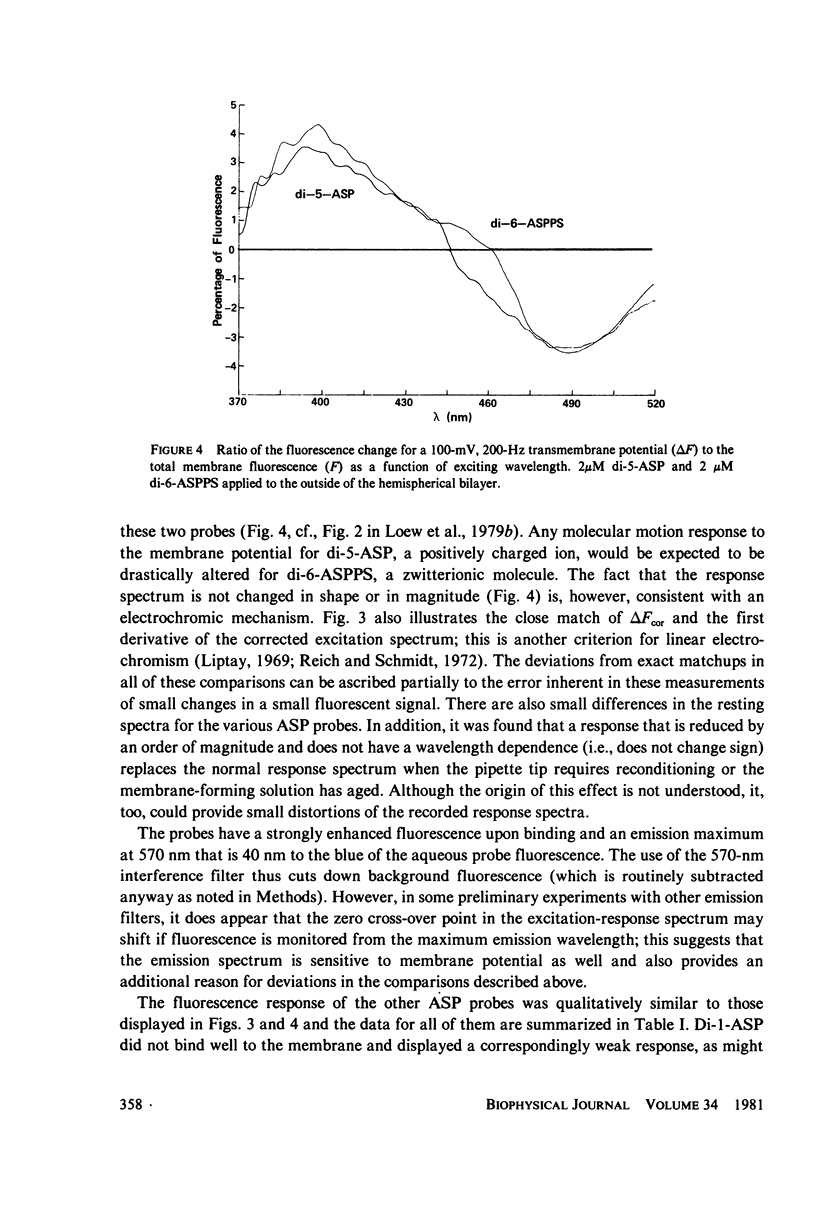
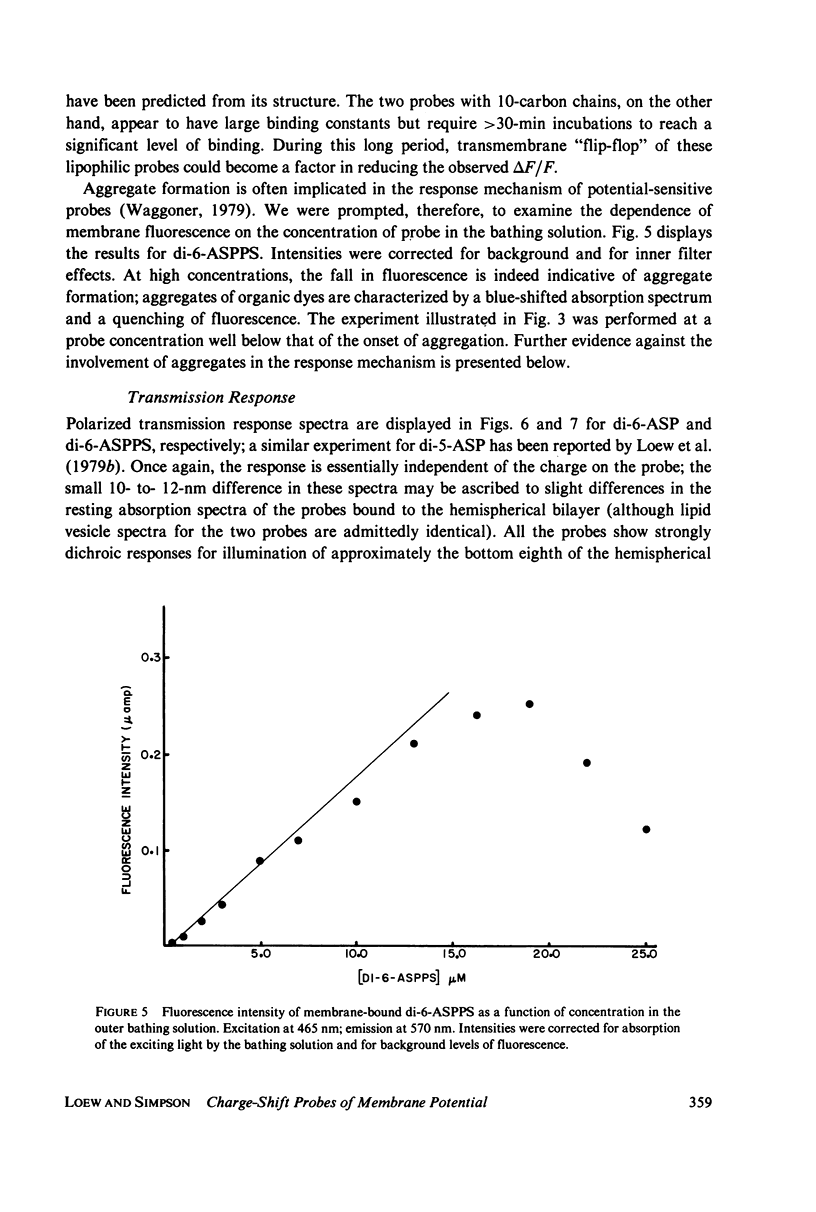
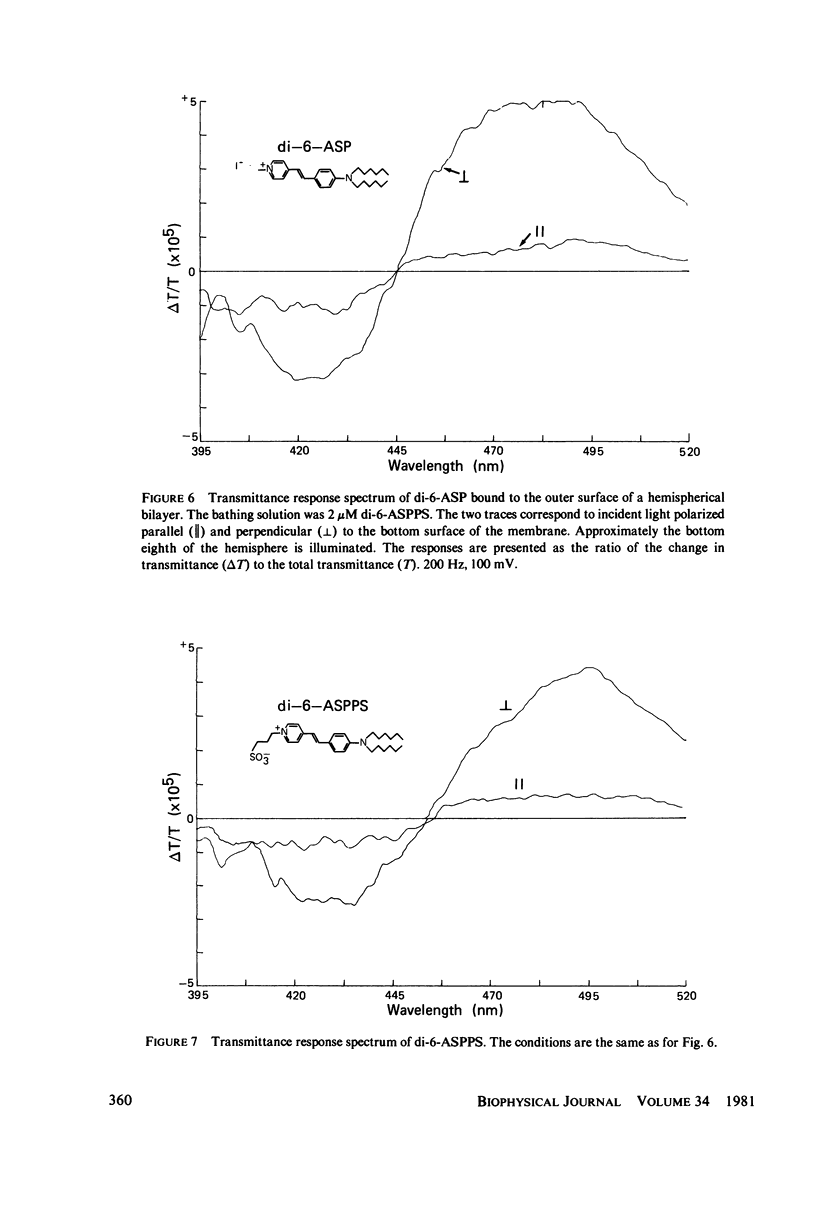
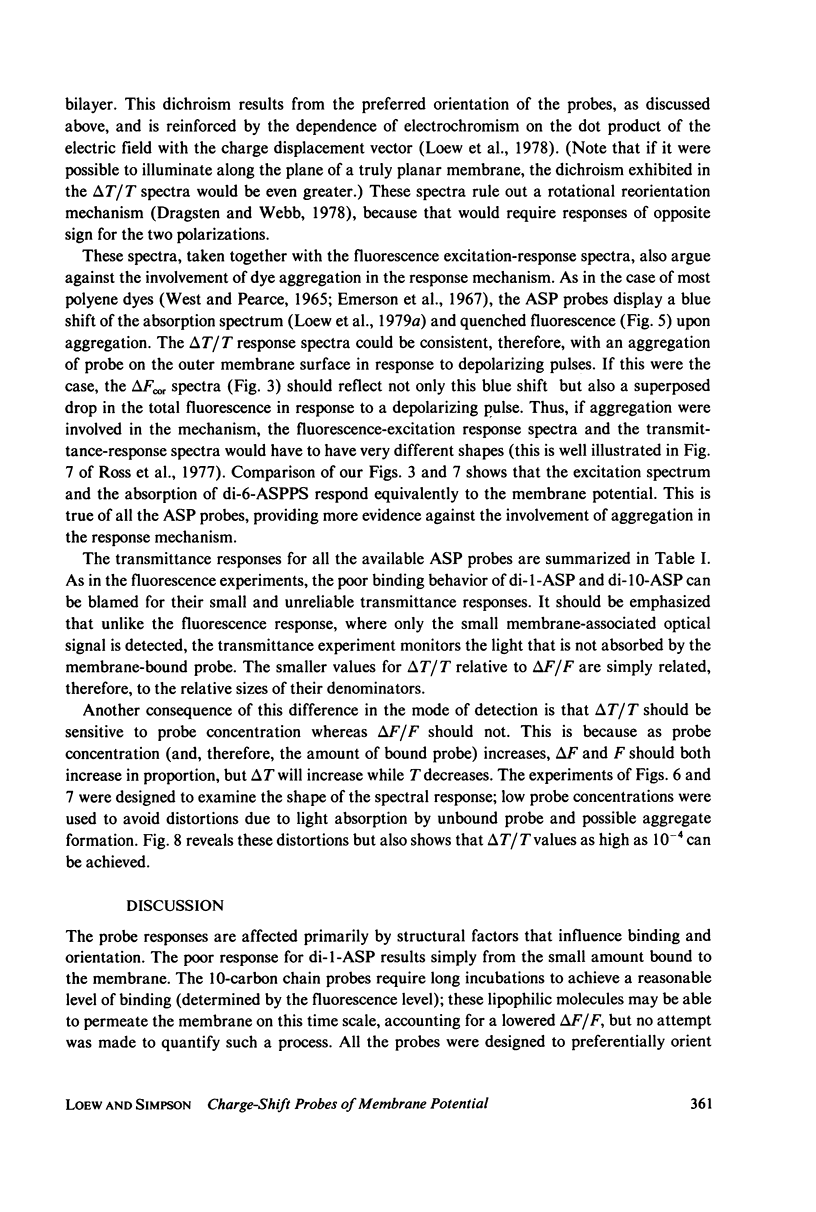
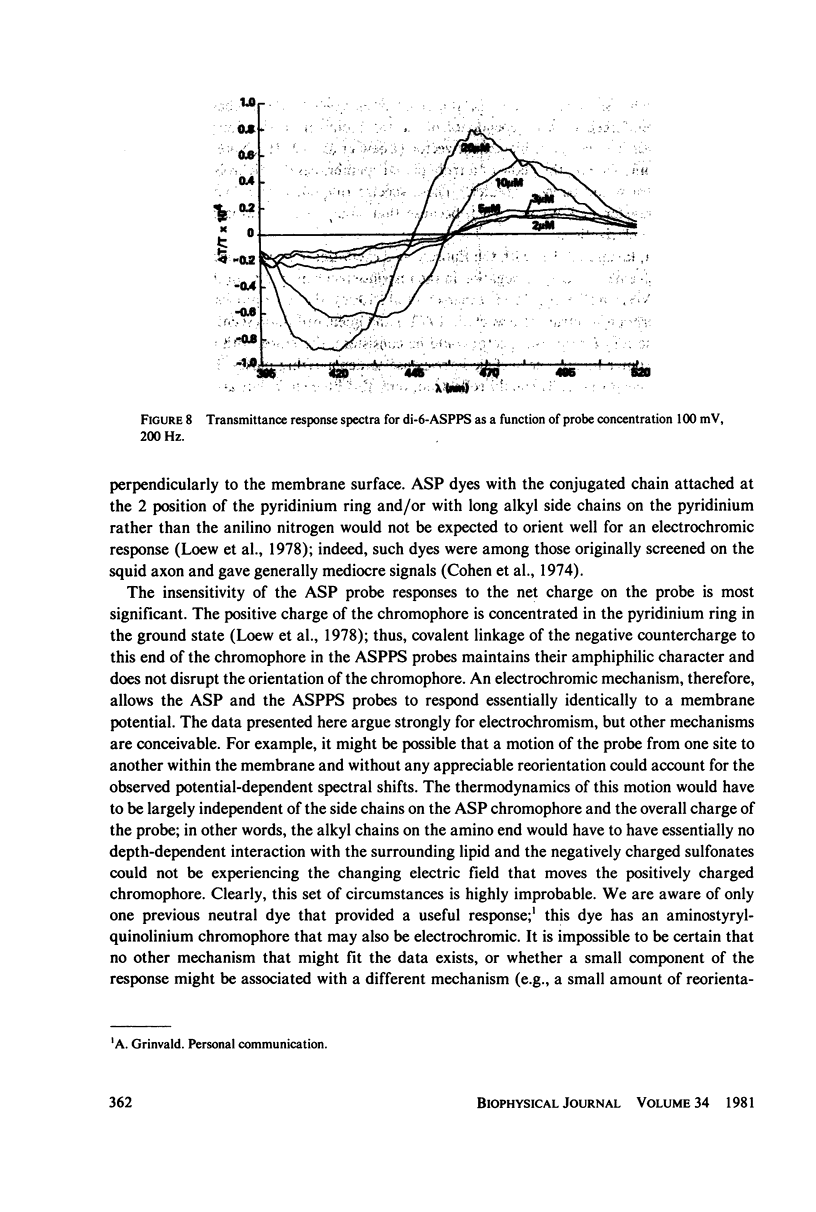
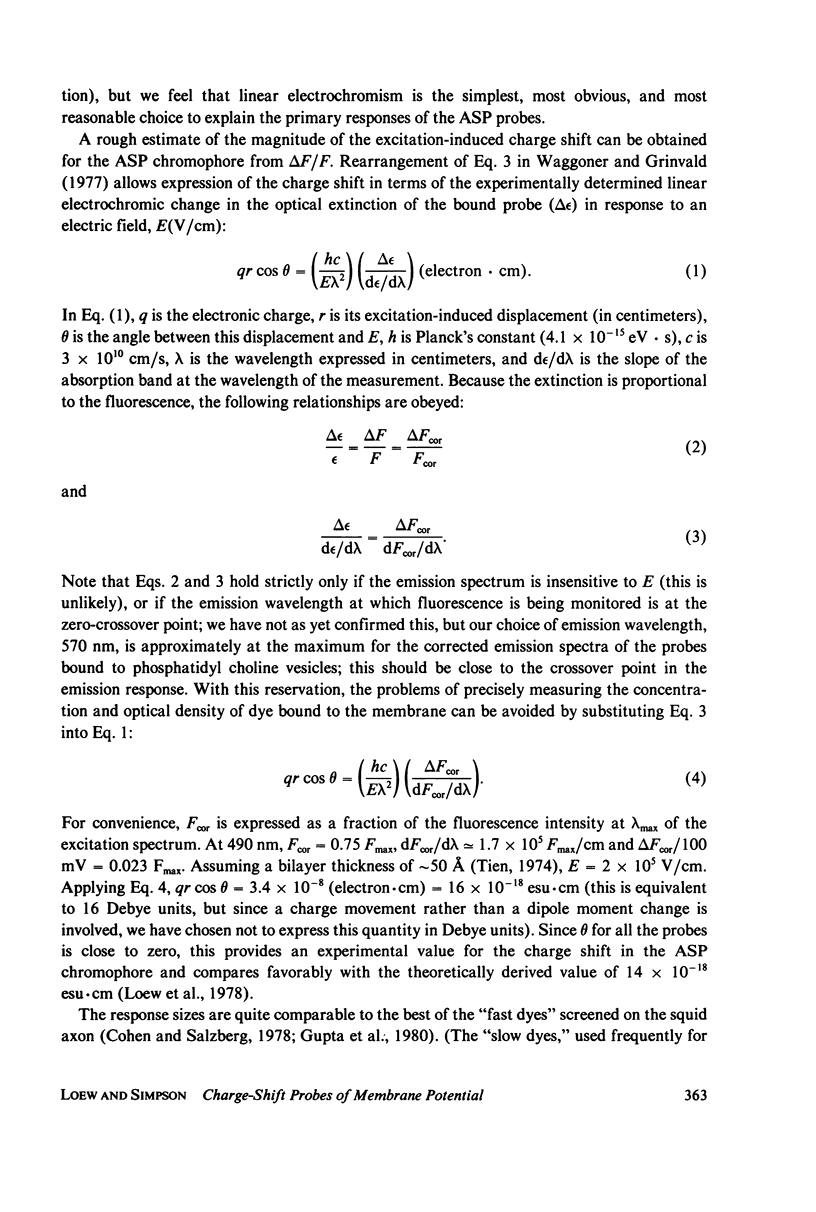
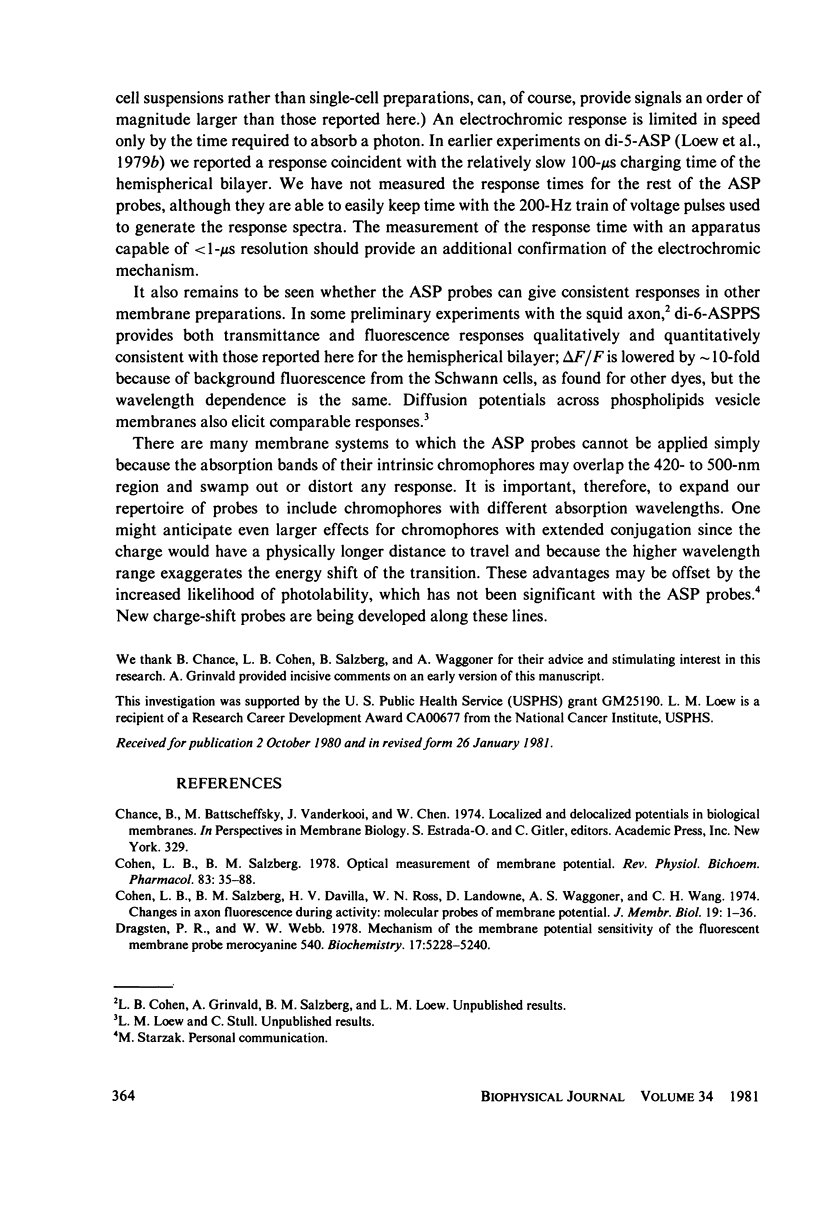

Selected References
These references are in PubMed. This may not be the complete list of references from this article.
- Cohen L. B., Salzberg B. M., Davila H. V., Ross W. N., Landowne D., Waggoner A. S., Wang C. H. Changes in axon fluorescence during activity: molecular probes of membrane potential. J Membr Biol. 1974;19(1):1–36. doi: 10.1007/BF01869968. [DOI] [PubMed] [Google Scholar]
- Cohen L. B., Salzberg B. M. Optical measurement of membrane potential. Rev Physiol Biochem Pharmacol. 1978;83:35–88. doi: 10.1007/3-540-08907-1_2. [DOI] [PubMed] [Google Scholar]
- Dragsten P. R., Webb W. W. Mechanism of the membrane potential sensitivity of the fluorescent membrane probe merocyanine 540. Biochemistry. 1978 Nov 28;17(24):5228–5240. doi: 10.1021/bi00617a024. [DOI] [PubMed] [Google Scholar]
- Loew L. M., Bonneville G. W., Surow J. Charge shift optical probes of membrane potential. Theory. Biochemistry. 1978 Sep 19;17(19):4065–4071. doi: 10.1021/bi00612a030. [DOI] [PubMed] [Google Scholar]
- Loew L. M., Scully S., Simpson L., Waggoner A. S. Evidence for a charge-shift electrochromic mechanism in a probe of membrane potential. Nature. 1979 Oct 11;281(5731):497–499. doi: 10.1038/281497a0. [DOI] [PubMed] [Google Scholar]
- Ross W. N., Reichardt L. F. Species-specific effects on the optical signals of voltage-sensitive dyes. J Membr Biol. 1979 Aug;48(4):343–356. doi: 10.1007/BF01869445. [DOI] [PubMed] [Google Scholar]
- Ross W. N., Salzberg B. M., Cohen L. B., Grinvald A., Davila H. V., Waggoner A. S., Wang C. H. Changes in absorption, fluorescence, dichroism, and Birefringence in stained giant axons: : optical measurement of membrane potential. J Membr Biol. 1977 May 6;33(1-2):141–183. doi: 10.1007/BF01869514. [DOI] [PubMed] [Google Scholar]
- Waggoner A. S., Grinvald A. Mechanisms of rapid optical changes of potential sensitive dyes. Ann N Y Acad Sci. 1977 Dec 30;303:217–241. [PubMed] [Google Scholar]
- Yguerabide J., Stryer L. Fluorescence spectroscopy of an oriented model membrane. Proc Natl Acad Sci U S A. 1971 Jun;68(6):1217–1221. doi: 10.1073/pnas.68.6.1217. [DOI] [PMC free article] [PubMed] [Google Scholar]


